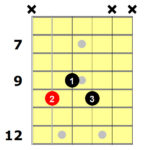Samick Acoustic Guitars often find their place in environments prioritizing resilience and affordability over premium sound. In my experience, our church acquired a couple of dreadnought Samick acoustics as donation instruments. These guitars, likely featuring laminated tops, are strategically placed in our music office, readily available for Sunday school and various church activities. Their appeal lies in their robust nature, capable of withstanding fluctuating humidity levels during winter months without requiring meticulous care.
Having played these Samick guitars myself and listened to others perform on them, I can offer some observations. For fingerstyle guitar playing, my preferred technique, the sound produced by these Samicks seems somewhat underwhelming. While the setup and intonation are surprisingly decent – potentially without professional luthier intervention – and the playability is satisfactory, even commendable, the tonal quality is rather basic and lacks projection. In a quiet, resonant space, playing a Samick can be a pleasant experience, such as during pre-rehearsal moments, but the overall tone remains unremarkable and lacks richness.
However, when strummed – the typical application in our church for accompanying singing in Sunday school or services – these Samick guitars perform adequately. They serve their intended purpose for the church’s music program without issue. The music staff finds them perfectly suitable for these applications.
From a personal standpoint, I would hesitate to purchase a Samick acoustic guitar unless the price was exceptionally low and my budget was extremely limited. Although I haven’t directly compared them side-by-side with Seagull guitars, my general impression of entry-level Seagull acoustics encountered in music stores has consistently been more favorable. The Samick guitars at our church, while playable, haven’t left me with a similarly positive impression in terms of tonal quality, although their playability is noteworthy for their price point.

